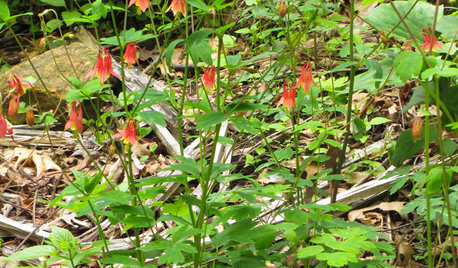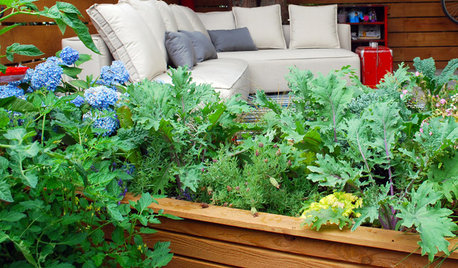Garden worm bonanza???
ctlady_gw
15 years ago
Related Stories

GARDENING GUIDESHouzz TV: Make a Worm Bin for Rich Soil and Happy Plants
A worm-powered compost bin that can fit under a sink turns food scraps into a powerful amendment for your garden. Here’s how to make one
Full Story
PHOTO FLIPBar Cart Bonanza
Browse 50 beautiful bar carts — because it’s happy hour somewhere in the world
Full Story
WINTER GARDENING10 Native Wildflowers to Beautify Your Winter Garden
They stand strong in wind, feed wildlife and are easy to grow. But you may want to add these plants for their looks alone
Full Story
FLOWERS AND PLANTSRoll Out the Welcome Mat for Hummingbirds With Red Columbine
Grow Aquilegia canadensis in eastern perennial gardens or informal woodland plantings for its delicate foliage and uncommon red flowers
Full Story
LANDSCAPE DESIGNGreat Design Plant: Retreat to the Shade of Hardy Catalpa
Big foliage and a towering height provide a shady respite in summer, but that's not all hardy catalpa offers dedicated gardeners
Full Story
MOST POPULARHow to Start a Cool-Season Vegetable Garden
Late summer and late winter are good times to plan and plant cool-season crops like salad greens, spinach, beets, carrots and peas
Full Story
SPRING GARDENINGHow to Grow a Rose Garden in Pots
Everything can come up roses, even without a plot of soil in sight. This step-by-step guide to growing roses in containers shows you how
Full Story
GARDENING GUIDESGet the Dirt on Your Garden’s Soil
Understand how your soil supports your plants so you can ensure your garden’s success
Full Story
EDIBLE GARDENSHow to Grow Your Own Sweet Summer Crops
This guide will help any gardener get started on growing the freshest warm-season veggies and berries for summer
Full Story
GARDENING GUIDESStep Right Outside for Fresh Herbs and Vegetables
Decks and patios can be convenient spots for edibles, and sometimes they even offer advantages over backyard gardens
Full StoryMore Discussions







diggingthedirt
ctlady_gwOriginal Author
Related Professionals
Reading Landscape Architects & Landscape Designers · Edinburg Landscape Contractors · Fort Payne Landscape Contractors · Holland Landscape Contractors · Marlborough Landscape Contractors · Rio Linda Landscape Contractors · Shorewood Decks, Patios & Outdoor Enclosures · Boise Decks, Patios & Outdoor Enclosures · Bonney Lake Decks, Patios & Outdoor Enclosures · Cincinnati Decks, Patios & Outdoor Enclosures · Fairfax Decks, Patios & Outdoor Enclosures · Knoxville Decks, Patios & Outdoor Enclosures · Saint Louis Park Decks, Patios & Outdoor Enclosures · Verona Decks, Patios & Outdoor Enclosures · Wilmington Decks, Patios & Outdoor Enclosuresdiggingthedirt
User
ctlady_gwOriginal Author